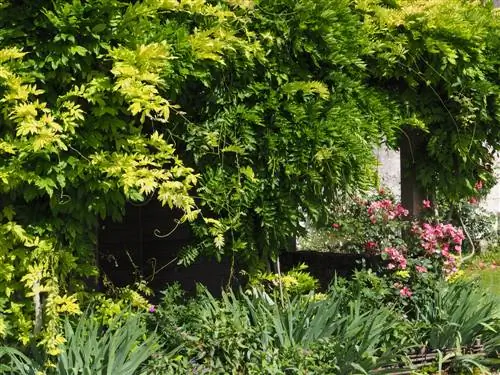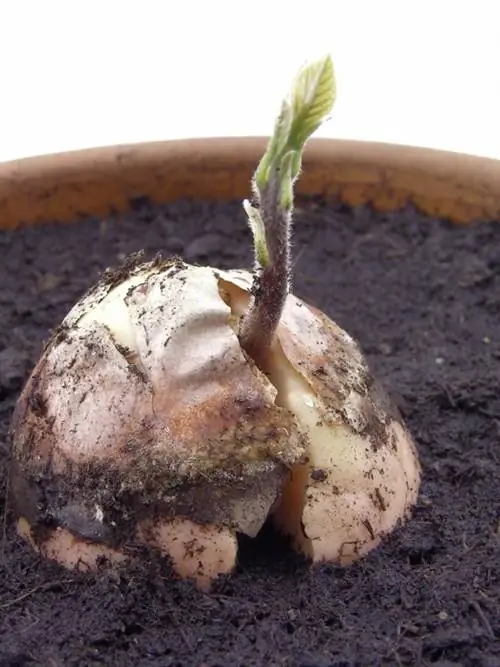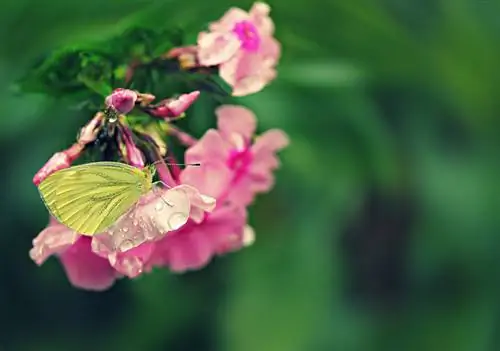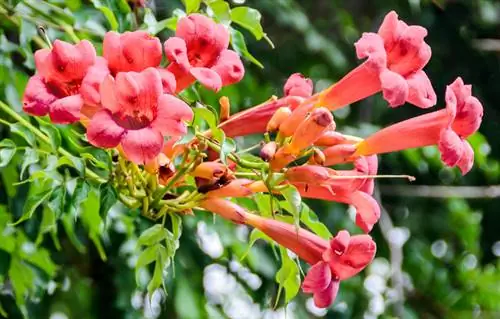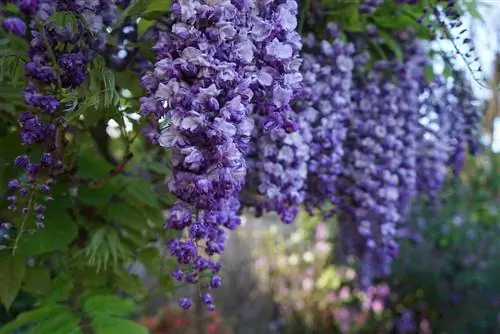- Author admin [email protected].
- Public 2023-12-16 16:46.
- Last modified 2025-01-23 11:21.
With its lush abundance of flowers, the wisteria is quite impressive and very attractive. It's no wonder that it can now be found in many gardens, as it is considered hardy and provides a Mediterranean flair even outside of the holiday season.
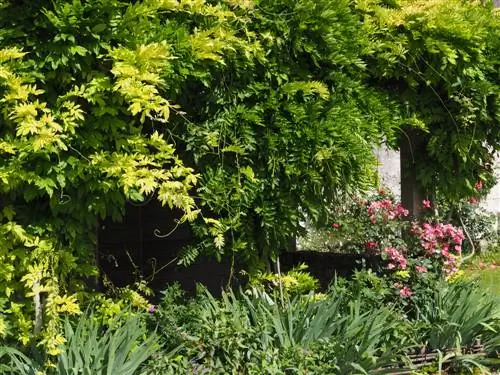
How do you properly care for a wisteria?
For optimal wisteria care, the location should be bright and protected from the wind, the soil should be lime-free, low in nitrogen, permeable and rich in nutrients. Stable climbing support, regular pruning and appropriate watering and fertilizing are also important. Note that wisteria is poisonous.
The original growth of the wisteria shows its relationship to beans, vetches and gorse. Without pruning it can grow up to 30 meters high. Its legumes are bean-like and very poisonous. They burst with a bang and throw away their seeds. The ripening Scots look very tempting for children. Therefore, wisteria is not exactly ideal for a family garden.
The best location and suitable soil
The wisteria loves a sunny location, but also thrives in partial shade. However, he is a little stingy with his abundance of flowers there. The soil should contain as little lime and nitrogen as possible, but should be well-drained and nutrient-rich. Give your wisteria a stable climbing aid to the side. It has a very vigorous growth and can even dent rain gutters.
Water and fertilize wisteria correctly
A well-rooted wisteria rarely needs additional watering in normal weather. However, it does not tolerate long periods of drought before and during flowering particularly well. You should also water your wisteria regularly in the pot.
Well-rotted compost (€43.00 on Amazon) is particularly recommended as fertilizer. Complete fertilizer often contains too much nitrogen. Although this ensures abundant leaf growth, it reduces the abundance of flowers. When using artificial fertilizer, pay attention to a low nitrogen and lime content.
Pruning the wisteria properly
If you haven't trimmed your wisteria for a long time, the flowers will diminish or even stop. In this case you can cut quite radically. However, it is better to prune regularly twice a year. This way the wisteria stays in shape and blooms happily.
Helping the wisteria bloom
If your wisteria isn't blooming, there can be a variety of reasons, some of which are easy to fix. Next spring, avoid longer dry periods and protect the sensitive buds from possible late frosts. If your wisteria has been carefully pruned and properly fertilized, it should bloom beautifully again.
The most important things in brief:
- ideal location: bright and sheltered from the wind
- Flowers less lush in partial shade
- Soil: lime-free and low in nitrogen, permeable, nutrient-rich
- stable trellis required
- Pruning: twice a year
- no or sparse flowers without pruning
- hardy, buds sensitive to frost
- Caution: very poisonous!
Tip
If you don't have much time for garden care, then you shouldn't plant wisteria. Regular pruning is essential for lush flowering.

